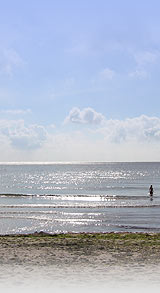We're approaching the end ordtak
Antall ordtak er 2100216
varav 2121434 på nordiska
Ordtak (2100216 st) Søk
Kategorier (3944 st) Søk
Forfattere (201357 st) Søk
Bilder (4592 st)
Født (10498 st)
Døde (3319 st)
Datoer (9520 st)
Land (27259 st)
Idiom (4439 st)
Lengde
Topplistor (6 st)
Ordspråksmusik (20 st)
Statistik
Denna sidan visar ordspråk som liknar "We're approaching the end of a fantastic voyage. This is the farthest anything from Earth has traveled and come back. Soon we'll be able to examine the building blocks that formed the solar system 4.6 billion years ago.".
Linkene lenger ned har ikke blitt oversatt till norsk. Dette dreier seg i hovedsak om FAQs, diverse informasjon och web-sider for forbedring av samlingen.
Här har vi samlat ordspråk i 12958 dagar!
Vad är ordtak?
Hur funkar det?
Vanliga frågor
Om samlingen
Ordspråkshjältar
Hjälp till!
varav 2121434 på nordiska
Ordtak (2100216 st) Søk
Kategorier (3944 st) Søk
Forfattere (201357 st) Søk
Bilder (4592 st)
Født (10498 st)
Døde (3319 st)
Datoer (9520 st)
Land (27259 st)
Idiom (4439 st)
Lengde
Topplistor (6 st)
Ordspråksmusik (20 st)
Statistik
Denna sidan visar ordspråk som liknar "We're approaching the end of a fantastic voyage. This is the farthest anything from Earth has traveled and come back. Soon we'll be able to examine the building blocks that formed the solar system 4.6 billion years ago.".
Linkene lenger ned har ikke blitt oversatt till norsk. Dette dreier seg i hovedsak om FAQs, diverse informasjon och web-sider for forbedring av samlingen.
Här har vi samlat ordspråk i 12958 dagar!
Vad är ordtak?
Hur funkar det?
Vanliga frågor
Om samlingen
Ordspråkshjältar
Hjälp till!
 |
Linkene lenger ned har ikke blitt oversatt till norsk. Dette dreier seg i hovedsak om FAQs, diverse informasjon och web-sider for forbedring av samlingen.
Här har vi samlat ordspråk i 12958 dagar!
Vad är ordtak?
Hur funkar det?
Vanliga frågor
Om samlingen
Ordspråkshjältar
Hjälp till!
 |
